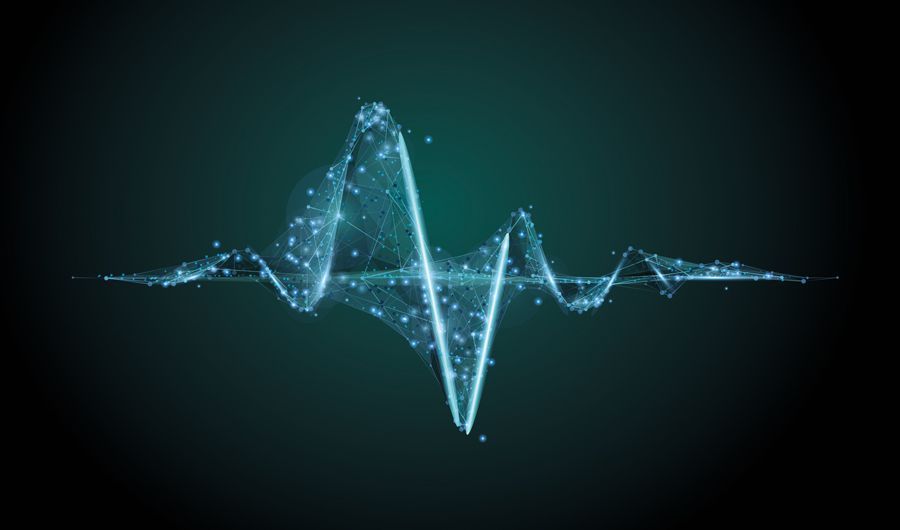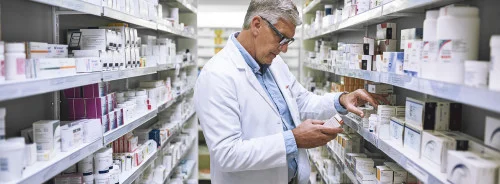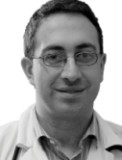HealthManagement, Volume 21 - Issue 4, 2021
The new way to monitor health
With the COVID-19 pandemic and the lockdowns and restrictions of physical contact, many cardiovascular scientific associations and journals started to speak about telemedicine solutions, but many highlighted that no telecardiology programme could be created overnight. In cardiology, the branch of telecardiology is well developed and the COVID-19 pandemic showed us the potential of this tool, for example in the field of remote monitoring with TeleCheckAF. Telecardiology with the right improvements in the future can offer many benefits.Key Points
- Telemedicine is not something new. It was well known from the beginning of the twentieth century. Cardiology has already covered all formats of telemedicine.
- The main lessons on telecardiology during the COVID-19 pandemic: unmasked many clinical visits as unnecessary, key for safety of patients and physicians, in some ways a return to the days of personal home visits, and big capacity for adaptation in the field of cardiology.
- TeleCheck-AF project during COVID-19 showed that mHealth experiences could be successful even during a pandemic period.
- Cardiovascular scientific societies have an important role in leading the telecardiology implementation.

Telecardiology - Something Unknown?
With the COVID-19 pandemic and its lockdowns and restrictions of physical contact, many cardiovascular scientific associations and journals started to speak about telemedicine solutions (Hollander 2020), but many highlighted that no telemedicine programme (also could be the same for telecardiology) could be created overnight. Due to this, only cardiology departments that have already implemented telemedical innovations can leverage them for the response to COVID-19.
We knew that telecardiology was not something new. It was well known from the beginning of the twentieth century. One of the first examples was electrocardiography, when, in the early 1900s, Einthoven transmitted heart tracing via telephone lines from the local hospital to the laboratory where his string galvanometer was located (Einthoven 1906). However, the importance of this tool started to grow in 1960s with some initial experiences.
We knew that telecardiology could be defined as “cardiology at distance”. Another way to define this could be “the practice of cardiology without the usual cardiologist-patient physical confrontation, via an interactive audio-video communications system”. But unfortunately for us, before the pandemic, telecardiology did not have a history of success. Problems mentioned in 1984 by Higgins (Higgins 1984) were still present in 2020: 1) The initial expense in setting up telecardiology systems is high and it is difficult to justify the costs. 2) There is resistance from many cardiologists who feel threatened by alternative approaches to the practice of medicine. 3) Cardiologists’ reimbursement and legal implications need to be resolved.
Telecardiology Before COVID-19
Cardiology has clearly covered all formats of telemedicine and we could talk of telecardiology as something real in daily practice but not properly implemented. The current formats of telemedicine used in cardiology are:
• Synchronous (live): remote consults or teleconsultation, live video/audio
• Asynchronous (store & forward): e-consultation, imaging documents, patient remote monitoring
In the field of cardiology, there have been multiple experiences in telecardiology. Probably, the main target was establishing a link with primary care through teleconsultation or e-consultation tools with different results. However, teleconsultation is not the Holy Grail and its advantages, disadvantages and limitations have been well described (Barrios 2020).
We must not forget that sometimes very complex strategies are not needed from telecardiology to offer improvements in cardiovascular outcomes. One of the best examples in scientific literature was the Tobacco, Exercise and Diet Messages (TEXT ME) trial, which based its strategy merely on reminder messages of healthy habits via short message service (SMS) in patients with proven coronary heart disease after discharge from hospital (Chow 2015). At six months, levels of LDL-cholesterol were significantly lower in intervention participants, with concurrent reductions in systolic blood pressure and body mass index, significant increases in physical activity, and a significant reduction in smoking. The majority reported the text messages to be useful, easy to understand, and appropriate in frequency.
Lessons from COVID-19 in Telecardiology
The first lesson: COVID-19 has unmasked many clinical visits as unnecessary and likely unwise. Telemedicine has surged, as we suspected, that social proximity is possible without physical proximity. Progress over the past two decades has been painfully slow toward regularising virtual care, self-care at home, and other web-based assets in payment, regulation, and training. The arrival of COVID-19 has changed that in weeks. Virtual care, well scaled, would release face-to-face time in clinical practice to be used for patients who truly benefit from it (Berwick 2020).
The second lesson is security in both ways (patient and physician). All the scientific societies in cardiology (Driggin 2020) went in the same direction as Hollander proposed in New England and adapted for this review: “the central strategy for surge control is “forward triage” — the sorting of patients before they arrive in the hospital. Direct-to consumer (or on-demand) telemedicine, a 21st-century approach to forward triage that allows patients to be efficiently screened, is both patient-centred and conducive to self-quarantine, and it protects patients, clinicians, and the community from exposure. It can allow physicians and patients to communicate 24/7, using smartphones or webcam-enabled computers. Automated screening algorithms can be built into the intake process, and local epidemiologic information can be used to standardise screening and practice patterns across providers” (Hollander 2020).
The third lesson: telecardiology is in some ways a return to the days of personal home visits. Elderly patients, those who have limited access to technology, or those with low health literacy can be provided tools and teaching to adapt. For sure, this will be a tactic to help eliminate barriers and increase access. Telemedicine has the potential to make healthcare more personalised, efficient, and coordinated; it has the potential to improve efficiency, patient and clinician satisfaction, and health outcomes (Poppas 2020).
The four lessons reveal the big capacity for adaptation in the cardiovascular field. Many recommendations have been created in less than one or two months to help in the management of the pandemic. The cardiology aspects specially focused on telecardiology in many cases. A good example are the dynamic web pages created by the principal cardiovascular societies related with COVID-19 like European Society of Cardiology (https://www.escardio.org/Education/COVID-19-and-Cardiology).
Remote Monitoring – A Great Opportunity in Telecardiology
COVID-19 has changed the conversation about the value of remote monitoring, with increased focus on the benefits that come with less travel and inconvenience for patients and less social interaction. Perhaps achieving the same results as usual care is sufficient (Cowie 2020).
One great example of implementation of remote monitoring during COVID-19 in the telecardiology field is the TeleCheck-AF project (https://www.fibricheck.com/telecheck-af/). To guarantee the continuity of comprehensive Atrial Fibrillation (AF) management through teleconsultation, during the pandemic the Maastricht Medical University Centre developed a mobile health (mHealth) intervention to support AF teleconsultations.
The TeleCheck-AF incorporated three important components: (i) a structured teleconsultation (‘Tele’); (ii) an app-based on-demand heart rate and rhythm monitoring infrastructure (‘Check’); and (iii) comprehensive AF management (‘AF’). The on-demand heart rate and rhythm monitoring infrastructure is based on a CE-marked mobile phone app (www.fibricheck.com) using photoplethysmography (PPG) technology through a built-in camera allowing semi-continuous heart rate and rhythm monitoring of AF patients prior to and during the teleconsultation (Linz 2020).
This strategy was extended to different European countries during the pandemic with great satisfaction for physicians and patients as a recent publication has shown (Gawalko 2021). The majority (>80%) of centres reported no problems during the implementation of the TeleCheck-AF approach and recruited patients agreed that the app was easy to use (94%).
This approach showed that despite different healthcare settings and mobile health experiences, an mHealth approach could be set up within an extremely short time and easily used in different European centres during COVID-19.
What Could be the Next Improvements in Telecardiology?
Professional medical societies have pivotal roles in promoting digital literacy, including the implementation of evidence-based digital redesign and innovation and should act as conduits to meaningful engagement with other key stakeholders (Cowie 2020).
Recently the Spanish Society of Cardiology proposed what could be better strategies to be implemented for cardiology consultations based on the telemedicine tools after COVID-19 (Table 1) (Barrios 2020).
Conclusion
Telecardiology had been with us for a long time but was not implemented properly. Telecardiology provides excellent opportunities. It allows patients to take a more active role in the healthcare system, facilitates patient-physician collaboration/communication, has the potential to make smart use of every byte of data and shows promising results in cardiovascular prevention.
Obviously, the organisation of telecardiology is a challenge for the health system especially in times of a pandemic, but it is also an opportunity for new solutions like the TeleCheck-AF project. We need to constantly evaluate usability, data accuracy and validation of the results obtained.
Scientific societies have an important role in leading telecardiology, and we must be ready to overcome the resistance to change to a new cardiology practice with many potential benefits.
Conflict of Interest
None.
References:
Barrios V et al (2020) Telemedicine consultation for the clinical cardiologists in the era of COVID-19: present and future. Consensus document of the Spanish Society of Cardiology. Rev Esp Cardiol (Engl Ed), 73(11):910-918.
Berwick DM (2020) Choices for the “New Normal”. JAMA, 323(21):2125-2126.
Chow CK et al. (2015) Effect of Lifestyle-Focused Text Messaging on Risk Factor Modification in Patients with Coronary Heart Disease: A Randomized Clinical Trial. JAMA, 314(12):1255-63.
Cowie MR et al. (2021). Remote monitoring and digital health tools in CVD management». Nature reviews. Cardiology, 1–2. Advance online publication. doi.org/10.1038/s41569-021-00548-x
Driggin E et al. (2020) Cardiovascular Considerations for Patients, Health Care Workers, and Health Systems During the COVID-19 Pandemic. Journal of the American College of Cardiology, 75(18):2352–2371.
Einthoven W (1906) Le telecardiogramme. Arch Int de Physiol, 4:132–164.
Gawałko M et al. (2021) The European TeleCheck-AF project on remote app-based management of atrial fibrillation during the COVID-19 pandemic: centre and patient experiences. Europace. doi.org/10.1093/europace/euab050. Epub ahead of print.
Higgins C et al. (1984) Telemedicine: an historical perspective. Telecommunications Policy, 8(4):307-313.
Hollander JE et al. (2020) Virtually Perfect? Telemedicine for COVID-19. The New England Journal of Medicine, 382(18):1679–1681.
Linz D et al. (2020) TeleCheck-AF for COVID-19. European Heart Journal, 41(21):1954–1955.
Poppas A et al. (2020) Telehealth Is Having a Moment: Will it Last? Journal of the American College of Cardiology, 75(23):2989–2991.







